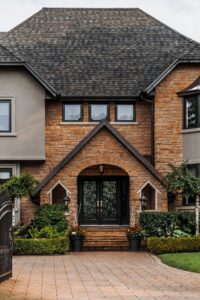With the rise of smart devices in outdoor spaces, ensuring a strong and secure Wi-Fi connection has become vital. This blog post will probe into the importance of securing outdoor Wi-Fi networks, the potential risks of leaving them unprotected, and practical tips for maximizing connectivity while safeguarding your smart devices. Whether you’re setting up a home automation system, monitoring outdoor security cameras, or simply browsing the web on your patio, understanding how to secure your outdoor Wi-Fi network is crucial in this digital age.
Key Takeaways:
- Choose the Right Equipment: Select outdoor Wi-Fi equipment specifically designed for secure and strong connectivity for smart devices.
- Implement Encryption: Use WPA3 encryption to secure the Wi-Fi network and prevent unauthorized access to sensitive data.
- Enable Two-Factor Authentication: Add an extra layer of security by requiring two-factor authentication for accessing the outdoor Wi-Fi network.
- Regularly Update Firmware: Keep the firmware of the outdoor Wi-Fi devices up to date to patch any security vulnerabilities and ensure optimal performance.
- Use Separate Guest Networks: Create separate guest networks to isolate smart devices from your main network and protect your sensitive information.
- Monitor Network Traffic: Use network monitoring tools to keep a check on the traffic and detect any anomalies that may indicate a security breach.
- Limit Range and Signal Strength: Adjust the range and signal strength of your outdoor Wi-Fi to limit access to unauthorized users outside your premises.
To secure an outdoor Wi-Fi network, follow these best practices
- Use a robust home network: Implement a secure and reliable home network with robust routers and mesh Wi-Fi systems to support outdoor smart devices[1][2].
- Security and Reliability: Opt for secure routers with features like WPA3 encryption, parental controls, and regular updates to protect against cyber threats[2].
- Device Selection: Choose smart devices designed for outdoor use with features like night vision and weatherproofing, such as Lorex cameras[4].
- Power Management: Consider devices with battery or solar panel power options to ensure continuous operation in outdoor environments[4].
- Network Separation: Utilize overlay networks to physically separate IoT traffic, enhancing security and performance for outdoor smart devices[3].
- Protocol Selection: Depending on the specific requirements of your outdoor smart devices, choose appropriate protocols like Wi-Fi, BLE, or Zigbee to meet their range, power, and data rate needs[3].
- Network Security: Implement strong authentication, access control measures, encryption, and firewalls to protect against potential IoT security threats and vulnerabilities[3].
- Update your ecosystem regularly: Keep your Wi-Fi routers, access points, laptops, mobile devices, printers, and other network components updated with the latest OSes, firmware, drivers, and applications[5].
- Use an obscure SSID: For home wireless networks, don’t use your last name or any other easily identifiable information as your SSID[5].
- Disable SSID broadcasting: Limit those who may be casually looking for an open Wi-Fi network by disabling SSID broadcasting[4].
- Use strong encryption: Implement WPA3 or WPA2/3 on the wireless network with a strong passphrase and protected management frames for added security[2].
- Implement wireless network segmentation: Segment your wireless network between primary Wi-Fi, guest Wi-Fi, and IoT network to keep less secure devices from directly communicating with more secure devices[2].
By following these best practices, you can ensure a secure and reliable outdoor Wi-Fi network for your smart devices.
Understanding Outdoor Wi-Fi Infrastructure
Components of a Secure Outdoor Wi-Fi Network
An imperative outdoor Wi-Fi network comprises various components to ensure a secure and robust connection. These components include outdoor access points, wireless bridges, antennas, and network switches. Each element plays a crucial role in extending the wireless network’s reach and reliability in outdoor environments.
Differences Between Indoor and Outdoor Wi-Fi Solutions
On the surface, indoor and outdoor Wi-Fi solutions may seem similar, but they have significant differences in terms of design and functionality. Outdoor Wi-Fi solutions are built to withstand harsh weather conditions, have longer-range capabilities, and offer higher data transmission speeds than indoor Wi-Fi options. Additionally, outdoor networks require specialized equipment and antennas to ensure optimal performance and coverage.
Between the two, outdoor Wi-Fi solutions require more robust security measures to protect against unauthorized access and potential cyber threats due to their exposure to external environments.
Best Practices for Outdoor Wi-Fi Security
Implementing Robust Encryption Standards
Some of the best practices for outdoor Wi-Fi security include implementing robust encryption standards to protect data transmitted over the network. Encryption protocols such as WPA3 or WPA2 with AES encryption should be used to secure the connection and prevent unauthorized access to sensitive information.
Regular Updates and Security Patches
Security experts recommend regular updates and security patches to ensure the outdoor Wi-Fi network is protected against the latest vulnerabilities and threats. One should regularly update the firmware of the router, access points, and other devices connected to the network to strengthen security measures and mitigate potential risks.
One must understand that outdated software and firmware can create vulnerabilities that hackers can exploit to gain unauthorized access to the network. By staying up-to-date with security patches and updates, one can effectively safeguard their outdoor Wi-Fi network and ensure strong connectivity for smart devices.
Enhancing Wi-Fi Performance for Smart Devices
Optimizing Bandwidth for Multiple Devices
To ensure strong connectivity for smart devices outdoors, optimizing bandwidth for multiple devices is crucial. With the increasing number of smart devices connecting to the Wi-Fi network, managing the bandwidth effectively can prevent congestion and ensure a smoother user experience. To achieve this, consider implementing Quality of Service (QoS) settings on your router to prioritize traffic based on specific devices or applications.
Overcoming Environmental Interferences
Bandwidth issues can arise due to environmental interferences in outdoor Wi-Fi networks. Common interferences include physical obstacles like walls and trees, as well as electronic interferences from other devices or neighboring networks. To overcome these challenges, consider positioning your router in a central location with minimal obstructions and interference. Additionally, using Wi-Fi range extenders or mesh network systems can help improve signal strength and coverage in outdoor areas.
Enhancing the Wi-Fi performance for smart devices in outdoor settings requires a combination of optimizing bandwidth allocation and overcoming environmental interferences. By implementing these strategies, you can ensure a strong and reliable connection for your smart devices, allowing them to function seamlessly in an outdoor environment.
Additional Considerations
Balancing Cost with Performance
For organizations looking to implement outdoor Wi-Fi networks, it is crucial to strike a balance between cost and performance. While cost-effective solutions may seem attractive initially, they may lack the necessary features and security measures to ensure a reliable and secure connection for smart devices. Investing in higher-quality equipment may incur a higher upfront cost but can lead to better long-term performance and reduced maintenance expenses.
Future-Proofing Your Outdoor Wi-Fi
For businesses and institutions planning to deploy outdoor Wi-Fi, future-proofing the network is important to ensure it can meet evolving technology requirements. This involves investing in equipment and infrastructure that can support the latest standards and technologies, such as Wi-Fi 6 and 5G connectivity. By future-proofing your outdoor Wi-Fi network, you can avoid the need for frequent upgrades and ensure a reliable and robust connection for years to come.
WiFi networks continue to evolve rapidly, with new technologies constantly emerging to improve performance, security, and efficiency. To future-proof your outdoor Wi-Fi network, consider investing in equipment that supports the latest standards, such as Wi-Fi 6 (802.11ax), which offers faster speeds, improved capacity, and better performance in high-density environments. Additionally, consider implementing network segmentation and encryption protocols to enhance security and protect sensitive data transmitted over the network.
FAQ
Q: Why is secure outdoor Wi-Fi important for smart devices?
A: Secure outdoor Wi-Fi is imperative for smart devices to ensure data privacy, prevent unauthorized access, and maintain reliable connectivity.
Q: What are the potential risks of using unsecured outdoor Wi-Fi for smart devices?
A: Unsecured outdoor Wi-Fi can expose smart devices to hacking, data breaches, identity theft, and malware infections.
Q: How can I secure my outdoor Wi-Fi network for smart devices?
A: You can secure your outdoor Wi-Fi network by using strong encryption, changing default passwords, enabling firewalls, and regularly updating firmware.
Q: What are some best practices for ensuring strong connectivity for smart devices on outdoor Wi-Fi?
A: Best practices include placing Wi-Fi access points strategically, avoiding signal interference, using Wi-Fi extenders or mesh networks, and optimizing network settings.
Q: How can I protect my smart devices from outdoor Wi-Fi signal interference?
A: You can protect your smart devices from signal interference by choosing the right Wi-Fi channels, upgrading to the latest Wi-Fi standards, and positioning devices away from electronic appliances.
Q: What should I do if I suspect unauthorized access to my outdoor Wi-Fi network for smart devices?
A: If you suspect unauthorized access, immediately change your Wi-Fi network password, enable MAC address filtering, monitor connected devices, and consider setting up a virtual private network (VPN).
Q: Are there specific security protocols recommended for securing outdoor Wi-Fi for smart devices?
A: Yes, it is recommended to use WPA3 encryption, disable WPS (Wi-Fi Protected Setup), enable network segmentation, and implement user authentication measures like two-factor authentication.
Citations:
[1] https://www.watchguard.com/wgrd-news/blog/5-best-practices-achieve-trusted-wireless-environment
[2] https://media.defense.gov/2023/Feb/22/2003165170/-1/-1/0/CSI_BEST_PRACTICS_FOR_SECURING_YOUR_HOME_NETWORK.PDF
[3] https://www.comparitech.com/blog/information-security/secure-home-wireless-network/
[4] https://www.cisco.com/c/dam/global/sv_se/assets/pdfs/smb/cdccont_0900aecd804909a5.pdf
[5] https://www.techtarget.com/searchnetworking/tip/How-to-secure-your-home-Wi-Fi-network-in-7-steps



Leave a Reply